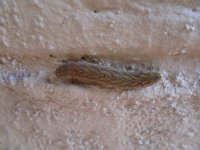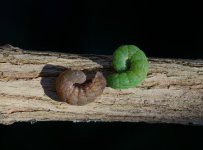This Particular Caterpillar I photographed In my front porch this morning from memory I can,t remember the last time I saw a larvae this early In the year surely It's only chance of survival I would have thought would be to turn Into a chrysalis at this point, would anyone know what species of moth this Caterpillar may belong to? If It pupates hopefully I'll get another photo of It.
Coal Tit.
Coal Tit.






